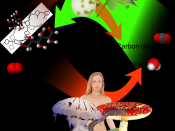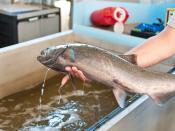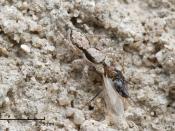A Local Ecosystem:1.The distribution, diversity and numbers of plants and animals found in ecosystems are determined by biotic and abiotic factors.
â¢Compare the abiotic characteristics of aquatic and terrestrial environmentsCharacteristicAquatic EnvironmentsTerrestrial EnvironmentsViscosity is a measure of a medium's resistance to an object moving through it.Water has a high viscosity. This makes it more difficult for organisms to move through it.Air has low viscosity. This makes it easier for organisms to move through it.
Buoyancy is the amount of support experienced by an object immersed in a liquid or gas. It is equal to the weight of the liquid or gas displacedThe buoyancy of water offers support to both animals and plants. It may help them to maintain their shape, and enables some organisms to function at different depths.Animals and plants do not experience much buoyancy from air. They need to be able to support themselves.
Temperature variationThe main source of heat is from the Sun's radiation.
The radiation intensity depends on latitude. It is greater at the equator than at the poles. Animals and plants can survive only within a certain temperature range. Water heats up more slowly than air. Temperatures in the surface ocean layers vary from 30ðC at the equator to freezing point in arctic regions. However, the temperature in a particular region varies only a little from year to year. Deep waters everywhere are cold. Small bodies of water may show considerable daily and seasonal variation. Surface temperatures on land vary far more than in water. The highest recorded in 60ðC, and the lowest is less then -80ðC. Daily and seasonal variations may be very great. Temperatures beneath the ground do not vary so much. The ability to avoid or tolerate heat gain and loss is important in land organisms.
Pressure variationThe Earth's...


